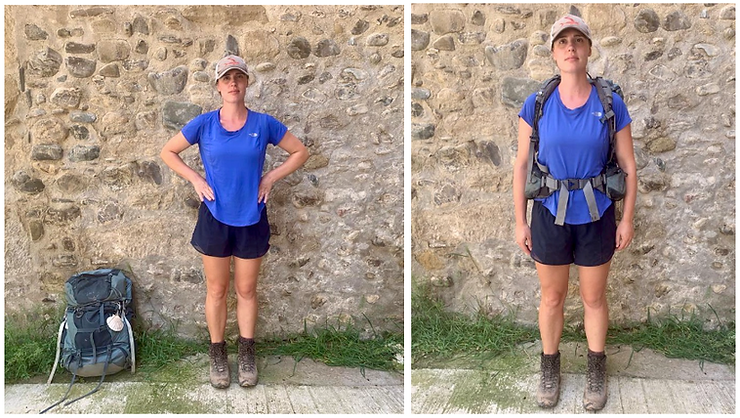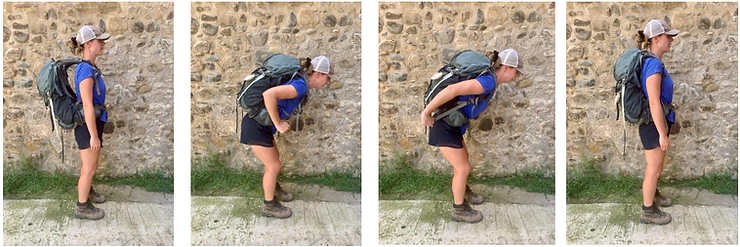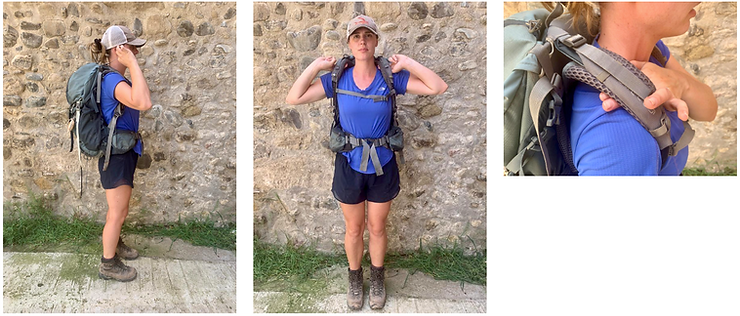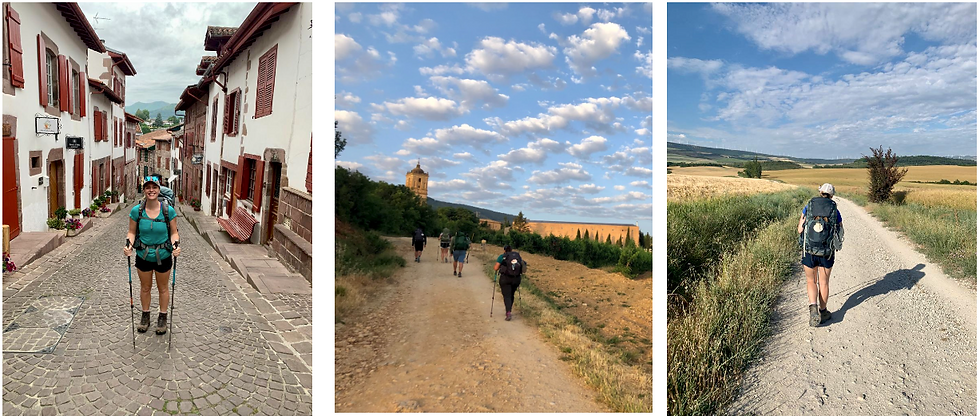Hiking Tips to Prevent Back Pain
- Royal City Physio
- Jul 1, 2022
- 3 min read
With summer finally here, it means hiking season! Hiking season can bring large backpacks and heavy loads while many people enjoy their outdoor activities. It’s important to wear a backpack properly in order to reduce your risk of back, neck, and shoulder pain, or other potential injuries. With a few helpful tips, your hiking season can be much more comfortable.
Tip #1: How to Wear your Hiking Backpack
Step 1: Locate the top of your hips, place the hip belt firmly around your waist and cinch tight.
You can find the correct spot by placing your hands on the tops of your hips or natural waistline, this is also called the iliac crest. It would be the same place you would carry a child or a laundry basket.

Step 2: Lean forward and pull the side straps tight. You want to feel cinched-in but comfortable at this step. Your lower body should be taking most of the backpack‘s weight at this stage.

Step 3: Adjust the top straps for balance. This step is personal preference. You can lengthen or shorten your tops straps based on how you want your backpack to feel. You should be able to easily fit your 1-2 fingers between your upper straps and your shoulders at this stage.

With your backpack fitted properly, your hips and lower body can now support most of your backpack’s weight. This reduces the stress and strain on your neck, back, and shoulder muscles. Therefore, reducing the likelihood of pain and overuse of these muscle groups.
Tip #2: How to Pack your Hiking Backpack
Packing your backpack is a crucial step in making your hiking experience more comfortable. Having your heavy and light items in the appropriate place can alter your pack’s weight distribution and ultimately affect how your backpack feels.
Step 1: Light items on the bottom
You want to pack light non-essential items on the bottom of your backpack first. That would include things like:
Sleep bags
Towels
Air mattress
Camping pillow
Placing soft items on the bottom of your backpack also gives your backpack a cushion when you take it off. The soft items will protect more expensive things like your stove, or essential items like your gas or food.
Step 2: Heavy items go in the middle
The middle of your backpack should hold your heavy items. Having your heavy items in the middle allows the bulk of your backpack to be near your center of gravity. Heavy items would include:
Food
Clothes
Water
Stove
Gas
Step 3: Lighter essential items are packed at the top.
The top of your backpack should be packed with essential items that you need quick access to, but that are not too heavy. Things like:
Sunscreen
Light snacks
Toiletries
Rain Jacket
Having light non-essential items near the bottom, heavy items in the middle, and light essential items at the top allows your backpack to be properly balanced. Therefore, your pack will be inline with your center of gravity, allowing you to be more stable and your back, neck, and shoulders more comfortable while hiking.
Tip #3: Try Using Hiking Poles
Hiking poles are a great way to reduce stress and strain on your muscles and joints. They give another point of contact while hiking, which can make you more stable going up and down hills. To use hiking poles, you want to lengthen the poles so that your elbows are just under 90 degrees while holding onto the handles.
When hiking steep uphill terrain you can shorten the poles slightly to make them easier to use. When hiking steep downhill terrain you will want to lengthen your poles to make it easier to contact the ground and give you support.

If you are planning to hike this summer with a heavy backpack, book an assessment with your physiotherapist to learn more helpful tips. If you have had neck, back, or shoulder pain while hiking in the past, your physiotherapist can help. An assessment along with postural exercises to strengthen your shoulders, spine, and core can help keep your body strong enough to carry heavy loads, correct imbalance, and prevent potential hiking injuries.
Happy Hiking!

Camino Frances: St-Jean-Pied-de-Port, France.
.png)
Comments